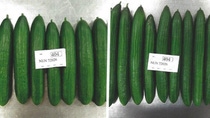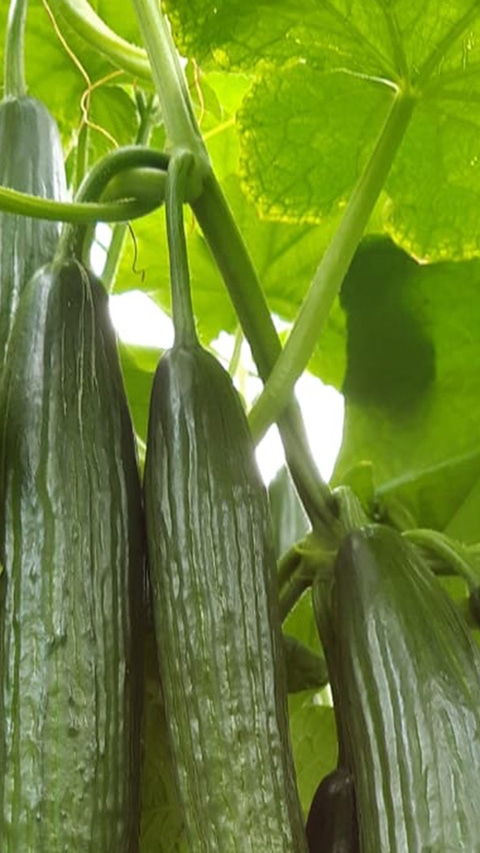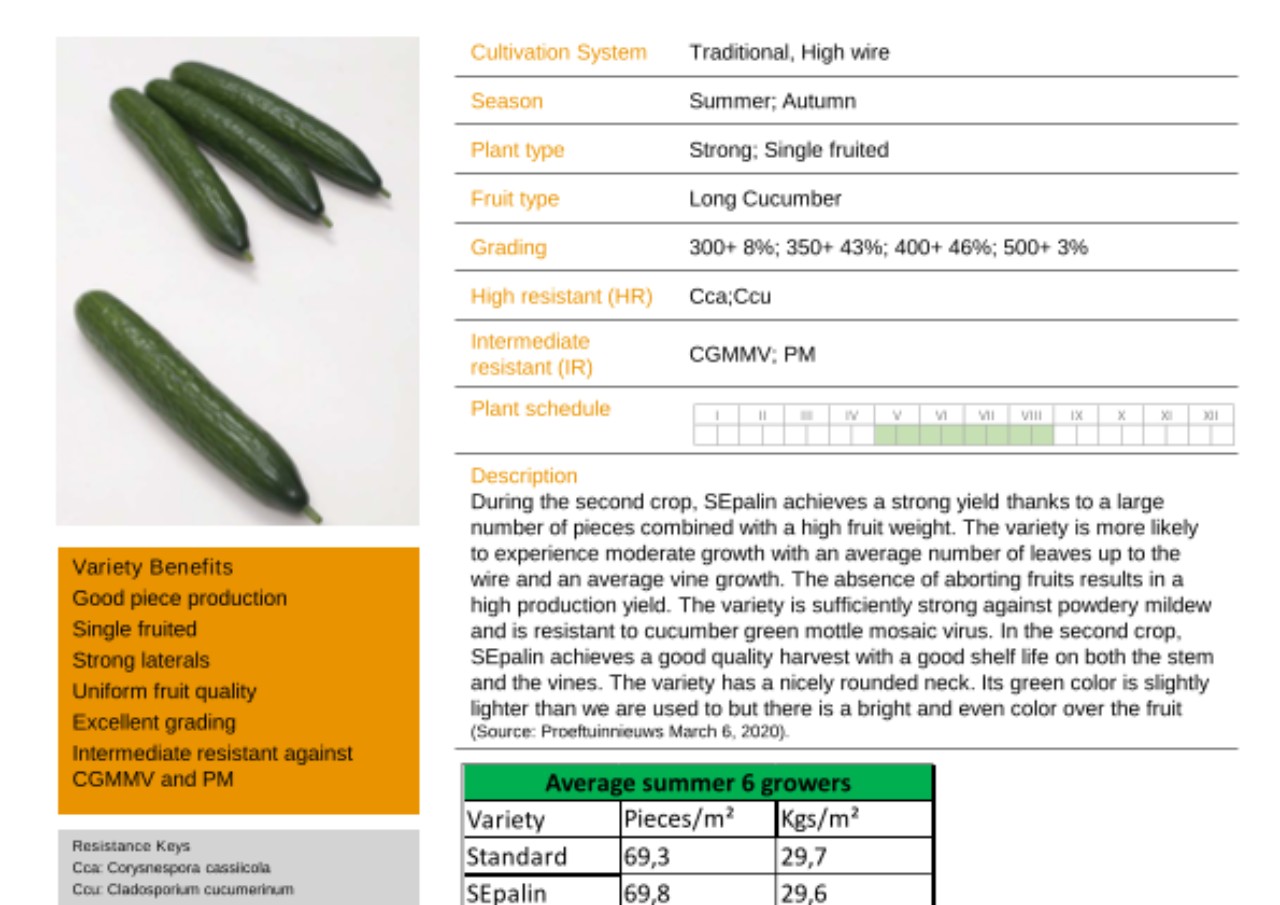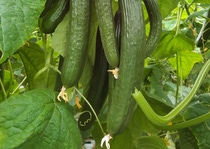SEpalin – be sure of your traditional summer crop
SEpalin is characterized by top production with intermediate resistance to cucumber green mottle mosaic virus. This has been demonstrated by extensive testing among growers in the Netherlands over the past two summers. The variety provides extra security compared to the standard because of its intermediate resistance to powdery mildew and cucumber green mottle mosaic virus. In relation to other resistant varieties, SEpalin produces a higher average fruit weight, which makes it easier to harvest heavier cucumbers. The crop is characterized by its powerful growth and good transition to the vines with a uniform fruit quality. ‘We consider the SEpalin variety to be a match for growers seeking vitality, resistance-related security, and sufficient fruit weight,’ explains Rens Muusers, Cucumber Sales Specialist at BASF Vegetable Seeds, in regard to SEpalin.
| Grading Summer | Grading Autumn | ||||
| Standard | SEpalin | Standard | SEpalin | ||
| 300-350 | 9% | 9% | 250-300 | 7% | 4% |
| 350-400 | 42% | 42% | 300-350 | 44% | 44% |
| 400-500 | 43% | 44% | 350-400 | 46% | 48% |
| 500-600 | 6% | 4% | 400-500 | 3% | 3% |
| Average summer 6 growers | ||
| Variety | Pieces/m² | Kgs/m² |
| Standard | 69,3 | 29,7 |
| SEpalin | 69,8 | 29,6 |
(Source: NL trials, BASF Vegetable seeds).
Belgium: SEpalin achieves a strong yield in the second crop
In the variety trial conducted by the Belgian testing station, SEpalin (NUN 72026 CUL) also confirmed its successful results from the past in the second traditional crop of 2019. During the second crop, SEpalin achieves a strong yield thanks to a large number of pieces combined with a high fruit weight. The variety is more likely to experience moderate growth with an average number of leaves up to the wire and an average vine growth. The absence of aborting fruits results in a high production yield. The variety is sufficiently strong against powdery mildew and is resistant to cucumber green mottle mosaic virus. In the second crop, SEpalin achieves a good quality harvest with a good shelf life on both the stem and the vines. The variety has a nicely rounded neck. Its green color is slightly lighter than we are used to but there is a bright and even color over the fruit.

A look at Germany
Trials conducted by the Saxony State Office for the Environment, Agriculture, and Geology in Dresden-Pillnitz demonstrate that SEpalin results in excellent production with the security of intermediate resistances. As early as 2018, SEpalin scored the best in the summer crop trial with the most pieces and the highest production in kilograms. In the trial, a comparison was made between ten varieties. In relation to the average class 1 production, SEpalin produced 11% more kilograms and piece production. In addition, SEpalin also produced the heaviest stem cucumber of the entire trial. The crop grows very easily and SEpalin therefore produces a large number of vines. SEpalin is a variety with a high production potential which grows easily (even under more extreme conditions) and which offers the security of intermediate resistance to powdery mildew and cucumber green mottle mosaic virus. (Source: Gurken im Sommeranbau auf Substrat https://www.hortigate.de/bericht?nr=78693)
SEpalin is now being cultivated in larger areas, also in Germany.
|
Production results for 2018 summer cultivation at the Saxony State Office for the Environment, Agriculture, and Geology in Dresden-Pillnitz. |
||
|
Variety |
kg/m2 class 1 |
Pieces/m2 class 1 |
|
Sepalin (NUN 72026) |
28.1 |
68.7 |
|
Average of ten varieties |
25.3 |
61.7 |


